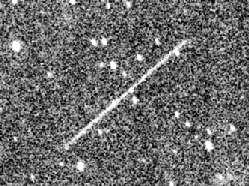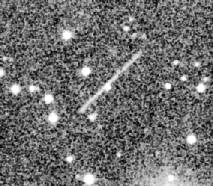"Scientists already know of 113 Potentially Hazardous Asteroids (PHAs) tumbling on paths that will eventually lead them to within an astronomical hair's width of Earth. The total number of such asteroids could be well over a thousand."
- EarthSky.com

Updated - The Jet Propulsion Lab's Paul Chodas, a research scientist who specializes in calculating the orbits of asteroids and other near-Earth objects, announced today that asteroid 2003 QQ47 is not on a collision course with Earth in March 2014. Chodas said, "This particular one was of interest because it is fairly large, 1.3 kilometers [0.8 mile], and the predicted impact was only ten years away. Combining those two factors, we raised it to some level of concern."
September 2, 2003 Cloudcroft, New Mexico - The first eyes to see the new asteroid threat called "2003 QQ47" are at the Lincoln Near Earth Asteroid Research Program at MIT in Cambridge, Massachusetts. LINEAR, as it's known to astronomers, was an outgrowth of the Ballistic Missile Defense Organization (BMDO) that took over the Reagan Administration's Star Wars program. LINEAR rose from the development of very high tech surveillance equipment that was originally designed to look for orbiting space junk high above our planet. Scientists already know of 113 Potentially Hazardous Asteroids (PHAs) tumbling on paths that will eventually lead them to within an astronomical hair's width of Earth. The total number of such asteroids could be well over a thousand. And this newly discovered one is about two kilometers in diameter - big enough to do serious damage on Earth if it hit us.
Click here to subscribe and get instant access to read this report.
Click here to check your existing subscription status.
Existing members, login below:
© 1998 - 2024 by Linda Moulton Howe.
All Rights Reserved.


